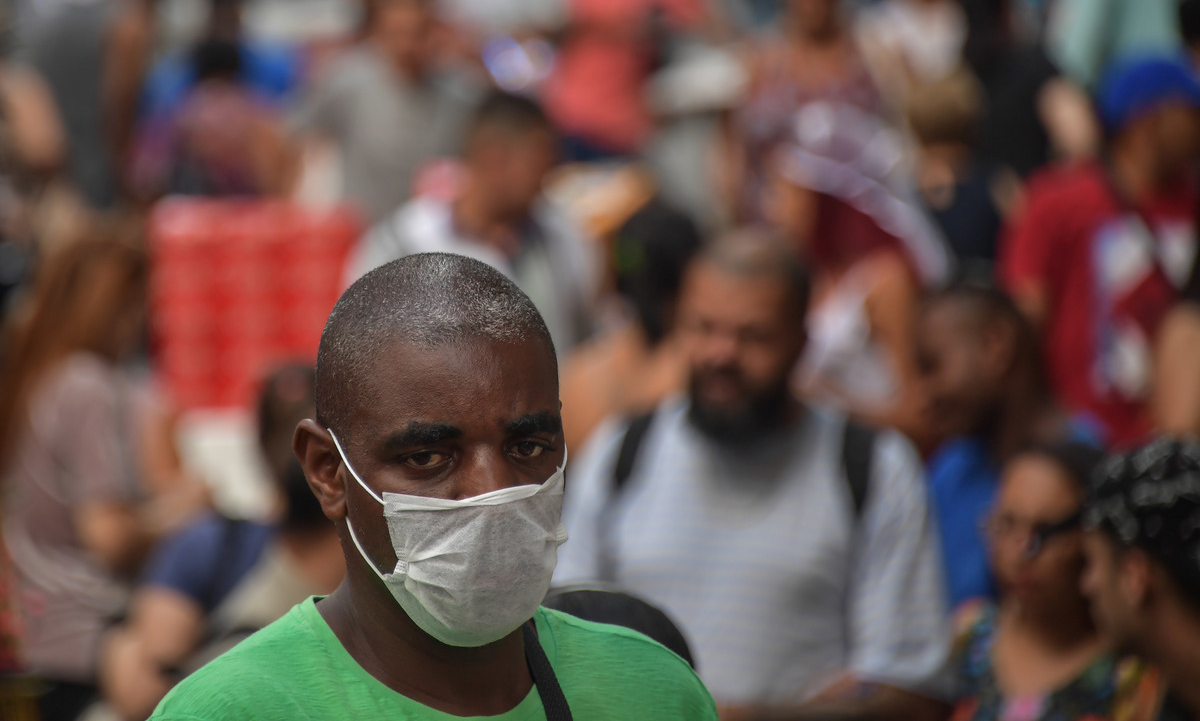RIO DE JANEIRO, BRAZIL – The proportion of people across Brazil who failed to take precautions against the spread of the novel coronavirus increased in November, while the portion of the population in social isolation decreased, according to data from the monthly Covid National Household Sample Survey, released by the Brazilian Institute of Geography and Statistics (IBGE).
Among the 211.7 million inhabitants, 10.2 million failed to implement any restrictive measure in November, the equivalent of 4.8% of the population. In October, this share represented 4.6% of the country’s inhabitants. Another 97.9 million reduced contact with other people but continued to leave home, which increased the share of the population in this situation from 44.3% in October to 46.2% in November.
Some 79.3 million, 37.5% of Brazilians, remained home and only left for basic needs in November, compared to a larger slice in October, when there were 38.2% of people protecting themselves this way. The strictly isolated totaled 23.5 million people, 11.1% in November, compared to a slice of 12.4% in October.
The North region presented the highest percentage of people who failed to comply with restrictions (8.8%), while the Northeast showed the highest proportion of strictly isolated people (12.8%).

Tests
By November, 28.6 million people had been tested for coronavirus infection, equivalent to 13.5% of the population. Among these, 22.7%, or 6.5 million, tested positive.
The higher the schooling level, the higher the percentage of people tested: among the people with none or incomplete basic schooling, 7.3% were tested, while among those with complete higher education or post-graduate degrees, this percentage rose to 28%.
Considering the type of test, 12.7 million people took the SWAB and 26.6% tested positive; 12.4 million took the rapid test with blood collected from a finger prick, of which 17.2% tested positive; and eight million took the venous blood collection test, with 25.5% of them having Covid-19 infection confirmed.
Chronic diseases
In October, 47.7 million people had some of the chronic diseases researched, which represented 22.5% of the population. Hypertension was the most cited (13.3%), followed by asthma or bronchitis or emphysema (5.5%), diabetes (5.3%), depression (2.9%), heart diseases (2.6%), and cancer (1.0%). Among people with any of the chronic diseases, 3.9% tested positive for Covid-19.
Symptom of influenza syndrome
In November, eight million people, 3.8% of the population, showed some of the symptoms of flu syndromes surveyed, following a gradual reduction over the months. In May, the start of the survey, 11.4% of the population reported some of the symptoms.
School activities
The IBGE also reported that in November, 46.3 million people aged between 6 and 29 attended school or university, which represented 60% of the population in this age group. The proportion of people who attended school, but had no school activities, stood at 5.3 million, while people who had activities amounted to 39.5 million.
Source: Estadão Conteúdo

